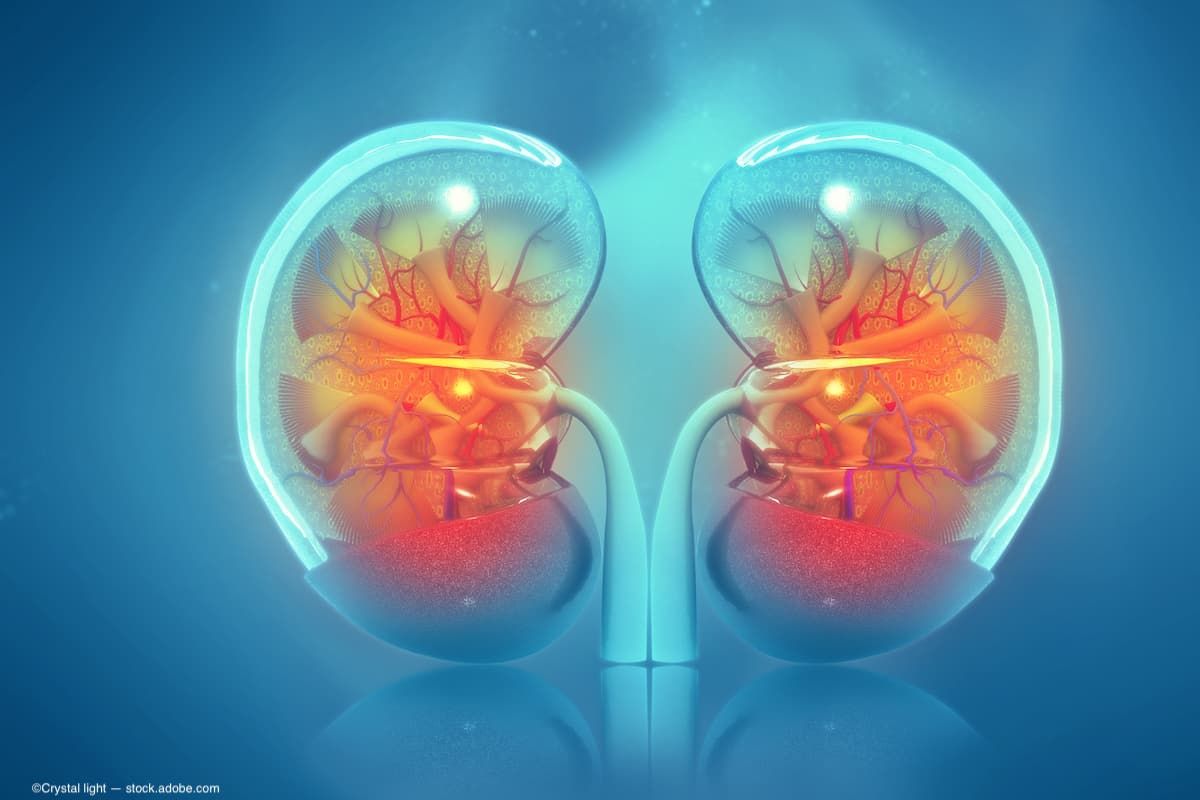News
Article
OCT retinal scans show the eye-kidney connection
Author(s):
The kidney and eye are structurally and functionally similar, and the diseases of the organs may present similarly and via common pathways.
(Image Credit: AdobeStock/Crystal light)

UK investigators, led by Tariq E. Farrah, BM, BSc, reported a link between the findings in the eye on optical coherence tomography (OCT) scans and renal pathology.1 He is from Edinburgh Kidney, University/BHF Centre for Cardiovascular Science, The Queen’s Medical Research Institute, University of Edinburgh, and the Department of Renal Medicine, Royal Infirmary of Edinburgh, Edinburgh, UK.
The research team pointed out the need for novel biomarkers that reliably track kidney injury, demonstrate a treatment response, and predict outcomes in patients with chronic kidney disease (CKD).
They also explained the rationale for the eye-kidney connection. The kidney and eye are structurally and functionally similar,2,3 and the diseases of the organs may present similarly and via common pathways. They offered evidence that Bruch’s membrane and the glomerular basement membrane both have a network of α3, α4 and α5 type IV collagen chains.4,5 Thus, type IV collagen inherited disease manifests with both nephropathy and retinopathy, as in Alport syndrome.6
Farrah and associates investigated the potential of retinal OCT imaging to reliably track kidney injury, monitor treatment responses, and predict outcomes in a series of prospective studies of patients with CKD who did not yet require dialysis. These 204 participants included those who underwent a kidney transplantation, had kidney failure and were undergoing kidney transplantation, living kidney donors, and 86 healthy volunteers.
The investigators reported that compared to healthy volunteers, “we observed similar retinal thinning and reduced macular volume in patients with CKD and in those with a kidney transplant. However, the choroidal thinning observed in CKD was not seen in patients with a kidney transplant, whose choroids resemble those of healthy volunteers. In CKD, the degree of choroidal thinning is related to the falling estimated glomerular filtration rate (eGFR) and extent of kidney scarring. Following kidney transplantation, choroidal thickness increases rapidly (~10%) and is maintained over 1 year, whereas gradual choroidal thinning is seen during the 12 months following kidney donation. In patients with CKD, the retinal and choroidal thicknesses are independently associated with eGFR decline over 2 years.”
Based on their findings, the researchers concluded that retinal OCT images can non-invasively be a monitor and prognostic biomarker of kidney injury.
References:
Farrah TE, Pugh D, Chapman FA, et al. Choroidal and retinal thinning in chronic kidney disease independently associate with eGFR decline and are modifiable with treatment. Nat Commun. 2023;14:7720; https://doi.org/10.1038/s41467-023-43125-1
Wong CW, Wong TY, Cheng C.Y, Sabanayagam C. Kidney and eye diseases: common risk factors, etiological mechanisms, and pathways. Kidney Int. 2014;85:1290–1302.
Farrah TE, Dhillon B, Keane PA, Webb DJ, Dhaun N. The eye, the kidney, and cardiovascular disease: old concepts, better tools, and new horizons. Kidney Int. https://doi.org/10.1016/j.kint.2020.01.039 (2020).
Booij JC, Baas DC, Beisekeeva J, Gorgels TGMF, Bergen, AAB. The dynamic nature of Bruch’s membrane. Prog Retin Eye Res 2010;9:1–18.
Boutaud A, Borza DB, Bondar O, et al. Type IV collagen of the glomerular basement membrane. J Biol Chem. 2000;275:30716–30724.
Savige J, Sheth S, Leys A, et al. Ocular features in Alport’s syndrome: pathogenesis and clinical significance. Clin J Am Soc Nephrol. 2015;10:703–709.
Newsletter
Don’t miss out—get Ophthalmology Times updates on the latest clinical advancements and expert interviews, straight to your inbox.





